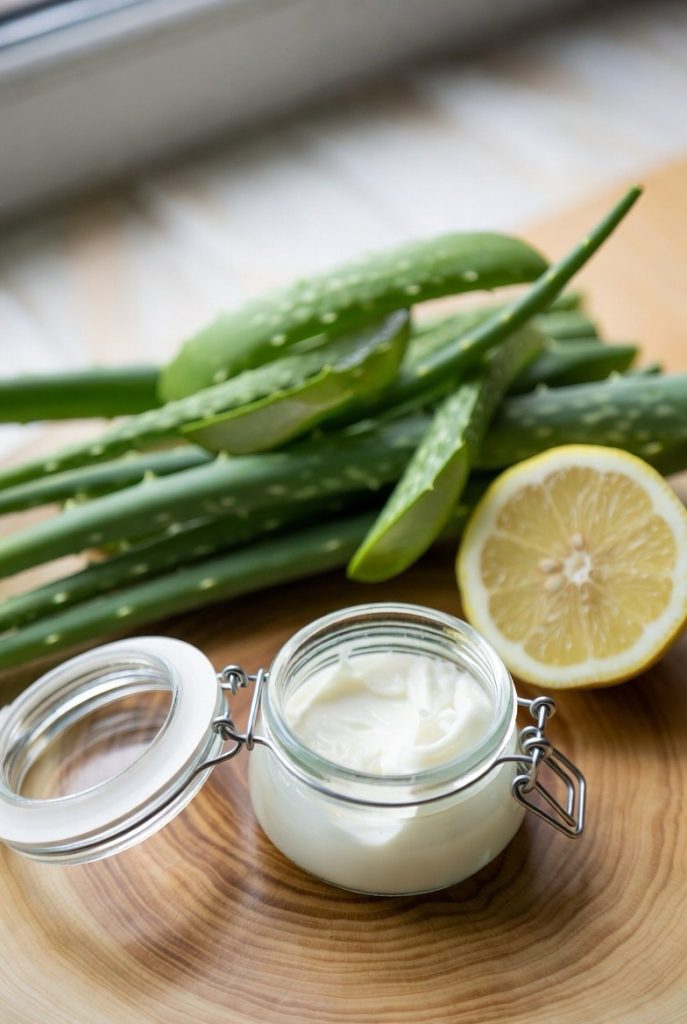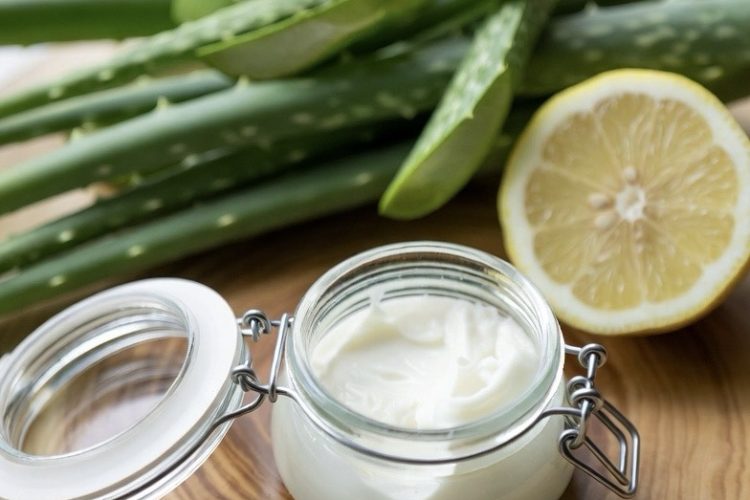Creating your own natural moisturizer at home is simple and customizable. Start by choosing a base like aloe vera gel or coconut oil and add a carrier oil that suits your skin type, such as almond or jojoba oil. Enhance the moisturizer with a few drops of your favorite essential oils, like lavender or chamomile. For a creamier texture, consider using beeswax or soy lecithin as an emulsifier. You can also add a touch of vitamin E oil for added stability. Mix the ingredients thoroughly and store your moisturizer in a clean, airtight container. Customization options abound, so experiment with different oils and scents to find what works best for your skin. Enjoy the benefits of your all-natural, homemade moisturizer for soft, radiant skin.
Long Version
Creating your own natural moisturizer at home can be a fun and cost-effective way to take care of your skin. By using simple, wholesome ingredients, you can tailor your moisturizer to your specific skin type and needs. In this comprehensive guide, we’ll walk you through the steps to make your own homemade natural moisturizer, provide a basic recipe, and offer tips for customizing it to suit your preferences.
Ingredients You’ll Need:
- Base Ingredients:
- Aloe Vera Gel or Coconut Oil: These serve as the base for your moisturizer. Aloe vera is great for soothing and hydrating, while coconut oil is rich and nourishing.
- Carrier Oils:
- Depending on your skin type, choose a carrier oil. For dry skin, use almond, avocado, or olive oil. For oily skin, consider jojoba or grapeseed oil.
- Essential Oils:
- Essential oils not only add a pleasant fragrance but also offer various skin benefits. Lavender, chamomile, or rosemary are popular choices.
- Emulsifiers (optional):
- Beeswax or soy lecithin can help blend the ingredients together if you prefer a creamier texture.
- Antioxidants (optional):
- Vitamin E oil can help prolong the shelf life of your moisturizer and provide additional skin benefits.
Equipment:
- Mixing bowl and utensils
- A double boiler or microwave for melting ingredients (if using solid oils)
- A clean, airtight container for storing your moisturizer
Steps to Make Your Natural Moisturizer:
- Cleanliness Matters: Ensure all your equipment and containers are clean and sterilized to prevent contamination.
- Choose Your Base: Select a base, either aloe vera gel or coconut oil, and measure it out as the primary ingredient in your moisturizer.
- Add Carrier Oils: Incorporate your chosen carrier oil according to your skin type. Use a 3:1 ratio of base to carrier oil (e.g., 3 tablespoons of aloe vera gel to 1 tablespoon of almond oil).
- Essential Oils: Add a few drops of your preferred essential oils for fragrance and additional skin benefits. Start with 5-10 drops and adjust to your preference.
- Emulsify (optional): If you want a creamier texture, melt a small amount of beeswax or soy lecithin in your double boiler or microwave and mix it into your moisturizer.
- Antioxidants (optional): For added stability and skin nourishment, include a few drops of vitamin E oil.
- Mix Thoroughly: Stir or whisk your mixture well to ensure all ingredients are evenly incorporated.
- Cool and Store: Let your moisturizer cool before transferring it into a clean, airtight container. Store it in a cool, dark place.
Customization Tips:
- Experiment with different carrier oils to find the one that suits your skin best.
- Adjust the essential oils to create unique scents and address specific skin concerns.
- Conduct a patch test on a small area of your skin to ensure you don’t have any adverse reactions.
By following this guide, you can create a natural moisturizer tailored to your skin’s specific needs, free from artificial additives and chemicals. Enjoy the benefits of soft, healthy, and radiant skin with your homemade creation.
More Info
Tailoring Homemade Moisturizers for Your Skin Type: A Guide to Ingredient Customization
When making moisturizer at home, you can adjust the ingredients based on your specific skin type. Here are some general guidelines for customizing your homemade moisturizer:
- Dry Skin:
- Use a larger proportion of nourishing oils like almond, avocado, or olive oil.
- Consider adding more beeswax or an emulsifier for a thicker consistency.
- Essential oils like lavender or chamomile can provide soothing benefits.
- Oily Skin:
- Decrease the amount of carrier oils and opt for lighter options like jojoba or grapeseed oil.
- Keep the moisturizer lightweight to prevent excess oiliness.
- Tea tree or rosemary essential oils can help control excess sebum.
- Sensitive Skin:
- Choose gentle carrier oils like jojoba or apricot kernel oil.
- Avoid strong essential oils and fragrance, or use them sparingly.
- Be cautious with emulsifiers or additives that may irritate sensitive skin.
- Combination Skin:
- Customize different portions of your moisturizer for different areas of your face. For example, use a richer blend for dry areas and a lighter one for oily areas.
- Adjust the ratio of ingredients based on your skin’s needs in different regions.
Remember that skin can change with the seasons, so you may need to modify your homemade moisturizer accordingly. Always perform a patch test before applying any new product to your face to ensure there are no adverse reactions.
Notes
Top 10 Trusted Moisturizer Lotion Brands for Healthy Skin
- CeraVe
- Neutrogena
- Olay
- Aveeno
- Eucerin
- La Roche-Posay
- Nivea
- Kiehl’s
- Clinique
- Mario Badescu
Essential Ingredients for Homemade Moisturizing Lotion
Basic ingredients for moisturizing lotion typically include water, oils or emollients, emulsifiers, thickeners, and preservatives.
Q&A
“What is my skin type, and which moisturizing lotion is best suited for it?”
- Identifying your skin type (dry, oily, combination, sensitive) is crucial in selecting the right lotion. Ask for recommendations tailored to your specific needs.
“What key ingredients are in this moisturizer and what benefits do they provide?”
- Understanding the ingredients helps you determine if the lotion addresses your skin concerns. Inquire about hydrating agents, antioxidants, or other beneficial components.
“Is this lotion suitable for both my face and body, or should I use different products for each?”
- Some lotions are designed for the body, while others are suitable for facial use. Clarify if the lotion is versatile or if separate products are needed for different areas.

Hashtags
#DIY #Moisturizer #Homemade #SkinCare #Natural #Ingredients #AloeVera #CoconutOil #CarrierOils #EssentialOils #Emulsifiers #Antioxidants #HealthySkin #DIYSkinCare #SkinCareRecipes #BeautyTips #HealthyLiving #SelfCare #GlowingSkin #HomeRemedies #Wellness #SkincareRoutine #Hydration #Nourishment #RadiantSkin #NaturalBeauty #SkincareEssentials






